delicacy!Dried shark meat
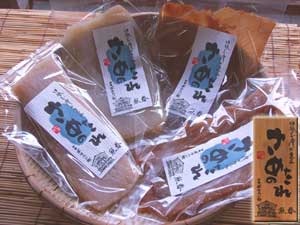
The habit of eating sharks is limited to parts of the San'in region and the Ise region.
This dried shark is a very common food that has been used as a side dish in the Ise family for a long time, but it is an important offering that has been an indispensable item for big festivals at Ise Jingu since ancient times. ..
In addition, one of the annexes, Izawanomiya (Izawanomiya = Isobe-cho, Shima-gun), has a legend of "seven sharks" that come to the Mita planting festival every year as a messenger of the gods. The etymology of "shark sauce" is not certain, but one theory is that it got this name because it was hung down and dried.
There are two types of sauce, "Shiotare" and "Ajitare". "Shiotare" is a plate-like fillet with a thickness of about 2 cm sprinkled with salt and dried in the sun. "Ajitare" is a thin fillet with a thickness of several millimeters attached to mirin and sun-dried. It is dried in.
The largest shipment in Japan!
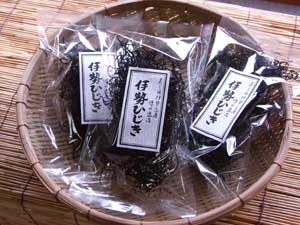
Among the hijiki, Ise hijiki is processed and produced about 70% of domestic consumption, and boasts the largest shipment volume in Japan.
Fresh and nutritious hijiki seaweed from around Ise, the gateway to Ise Bay, which is rich in nutrients."Nagahijiki" and "Sprout Hijiki" are typical hijiki, and "Nagahijiki" is a dried hijiki stalk that is thick and long and has a good texture when returned.In addition, some products have branches, which are called thread hijiki. "Sprout hijiki" is also called rice hijiki, which is made by picking only the rice grain-sized buds at the tip and chopping all but the stems.It is often used for stir-fried foods and mixed rice.
Hijiki has a high calcium content, which is about 14 to 15 times that of milk.In addition, it is popular as a health food because it is rich in iron, body, and dietary fiber and is non-calorie.
Addictive Ise udon
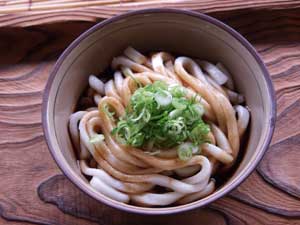
Thick, thick and soft noodles with a sweet and rich sauce made from rich tamari soy sauce.Eat chopped green onions as a condiment and entangle with a little sauce.
It is said that farmers in this area sprinkled a little lump of soybean paste on udon before the Edo period and ate it, and after that, it was made easier to eat by adding soup stock with dried bonito flakes. It is the beginning of Ise udon.
It is said that it was so popular that many food shops lined up and Ise udon shops lined up in the bustle of visiting Ise.Among them, Tofu Roku (Doburoku), which used to be in Furuichi, ate udon noodles from this shop along the way from Ise Jingu / Geku (Toyore Daijingu) to Ise Jingu / Naiku (Kotai Jingu). It was a popular udon restaurant that became a souvenir story.
I'm sure that the large crowd of people who came to visit us must have carved this "Ise udon" into their hearts with Mr. Ise, as it belongs to the common people.
And even now, Ise udon continues to be loved by the people of this area.If you come to Ise, why don't you try this "Ise udon" once?
Fresh, safe and cheap because it is sold directly by the producer!
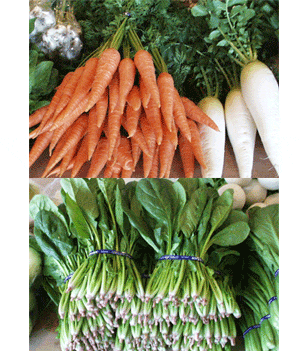
It is a seasonal vegetable made with great care in the warm climate, fertile land, and the abundant water of the clear stream Miyagawa.
Ise vegetables use plenty of organic fertilizers and are rich in nutrients such as minerals.We are proud of the special taste that has been taken care of.
In addition, green onions are the most produced in the prefecture, mainly in the Higashitoyohama area located in the north.This is a sandy loam area, suitable for green onion cultivation, and has a history of about 70 years.Since 45, it has been designated as a national production area for autumn and winter green onions.
The sun and the sea breeze from the sea are the secrets!
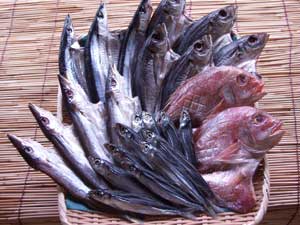
Since ancient times, Ise has been blessed with a wide variety of fish from the Kuroshio dancing Kumano Nada and the calm Ise Bay, and many fish such as open, round-dried, and mirin-dried fish are produced according to the four seasons.
Dried Ise fish that has a natural and light taste and contains protein with excellent quality and quantity.Please use it as a side dish, snack, souvenir, gift, etc. at your home dining table.
Dried fish is a very simple processed food made by salting fish and drying it for long-term storage.However, it is quite difficult to make something that is said to be delicious "because it is simple".
The history of dried fish goes back to the Nara period, and it is an important food culture in Japan where the wisdom of our predecessors is concentrated.In addition, since it contains a large amount of DHA, which is a nutritional component that is indispensable to the body but can hardly be produced by itself, it is also effective in activating the brain and preventing blood purification blurring.
A taste that has been loved by people visiting Ise since the Edo period
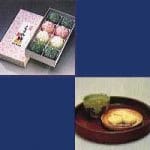
Since the Edo period, Ise Jingu has welcomed many "Ise Miki" people as the "hometown of the Japanese mind."
People have traveled from all over the country for days on foot and have come to Ise.What was favored by such travelers and used as a substitute for meals was mochi, which was eaten quickly and was hungry.
As the number of visitors to the shrine increased, many rice cake shops were opened along the Sangu Highway, and eating rice cakes from various places became one of the pleasures of the trip at that time.
In addition, the Sangu Kaido from Kuwana to Ise has come to be called the Mochi Kaido.